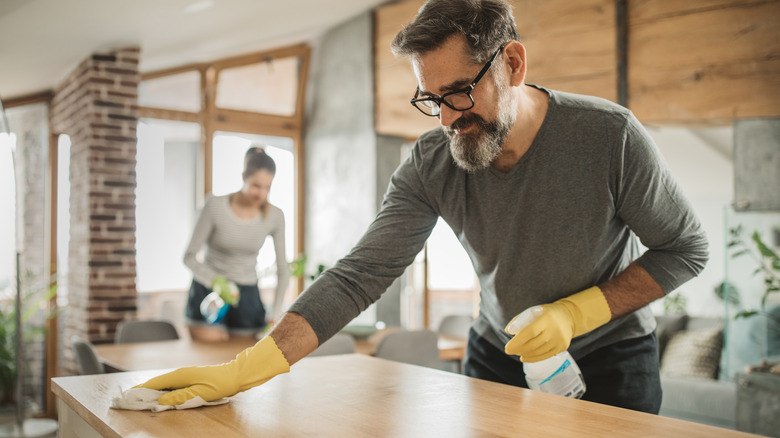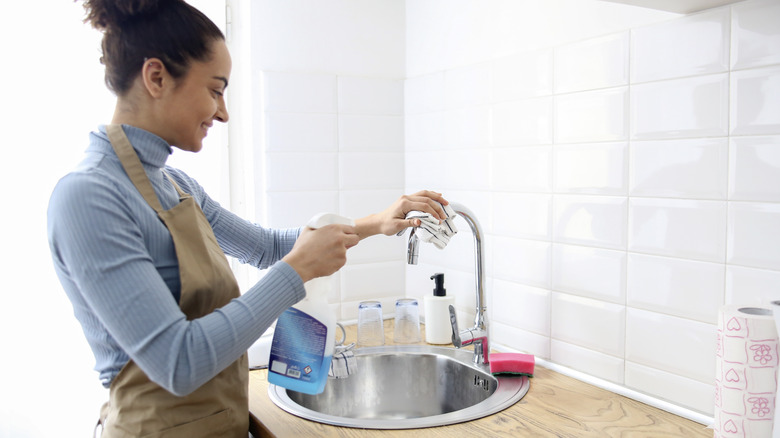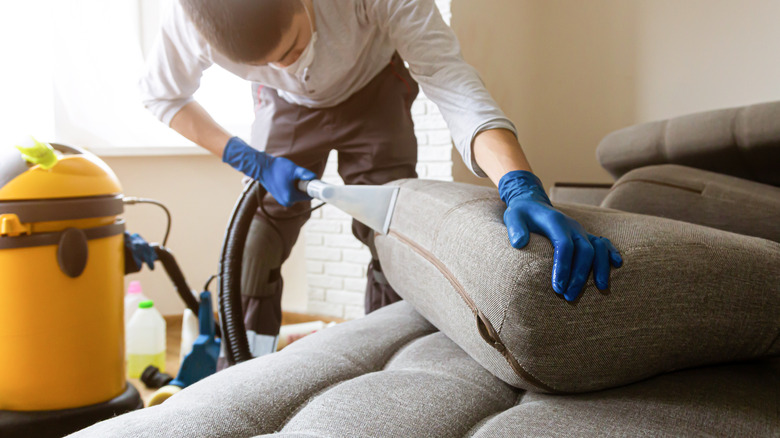What To Know About Cleaning Your Home After Pest Control Treatment
You tried plug-in pest repellents to keep mice out of your home and dusted regularly to keep spiders away, but neither did the trick. Your pest problem was totally out of control, and you were forced to call in professionals to rid your home of unwanted guests. The good news is the exterminators came and conquered. The bad news is you're now left to deal with post-treatment cleanup and don't know where and when to start. The answer depends on the type and intensity of treatment employed by pest control operators, but generally, light cleaning can take place three to five days post-extermination, while deep cleaning should wait until the two-week mark.
Given that most professional exterminators employ harsh chemicals to mitigate infestations — and, in the process, transform your house into a makeshift pest cemetery — it's common to want to immediately scrub your living space from top to bottom the minute you return home. Unfortunately, acting on this impulse may negate the time, energy, and money that went into the professional pest-killing process. In most cases, complete extermination doesn't happen instantaneously. Depending on the type of critter you're dealing with, eradication could take four to six weeks, as creepy crawlies like roaches need time to transport and share chemicals with family and friends in their respective hiding spots. To avoid interfering with this procedure, it's vital to consult with your specific exterminator. Your pro will provide a timeline that details when and where you can start cleaning.
Post-extermination cleaning tips: light cleaning
While cleaning routines will vary depending on the type of treatment used — powders, sprays, foggers, baits, or traps — typically, exterminators will allow light sanitizing less than a week after chemical applications. However, most warn against disturbing areas treated with spray pesticide as it needs ample time to dry in order to be effective. In the meantime, you can complete minimally invasive cleaning, such as light sweeping or vacuuming of floors — provided you avoid areas closest to the walls that were treated and disrupt any rodent traps. Additionally, modest wiping of counters and cabinets with a clean rag is fine.
Other short-term cleaning tasks that can be safely done without fear of interfering with synthetic substances include washing the interiors of sinks and wiping down faucets and fixtures. In addition, regardless of whether or not your home was treated with a non-toxic compound, consider washing your dishes if they were stored in close proximity to treatment areas. Also, if you forgot to put away food or perishable items left on counters or tables on extermination day, now is the time to toss them in the trash. It's best to err on the side of caution when disposing of uncovered food that may have been exposed to treatment fumigants. Moreover, once you rid counters of any leftovers or crumbs, do your best to keep them clean and clear so they don't become food sources for potential pests.
Post-extermination cleaning tips: deep cleaning
Exterminators generally give the green light for deep cleaning a few weeks post-treatment. While it's tempting to go wild sanitizing every surface, you're better off employing a top-to-bottom cleaning strategy. Let gravity work with you rather than against you by tackling your home's tallest surfaces first. Start by wiping down ceiling fans, walls, and windows with a cloth dipped in a 50-50 solution of vinegar and water. Don't forget to wipe down doors, drawers, and appliances with a clean rag. Next, move on to furniture. It's a good idea to steam clean or vacuum larger pieces of furniture, especially couches, chairs, and beds, paying close attention to crevices and spaces under cushions that may be harboring dead insects.
Save the floors until the end of your post-extermination deep clean. Be sure to move furniture and large appliances, so you can access every nook and cranny. Then, either shampoo or steam clean your carpets. For hardwood, tile, or linoleum floors, clean baseboards with warm soapy water before mopping the entire room, including the perimeters treated by exterminators. It's essential to remove any excess water from the mop to expedite drying, as bugs are attracted to any moisture. This is especially true for insects exposed to pesticides since they use water sources to flush toxins from their bodies and will seek out any amount of standing water to do so.


